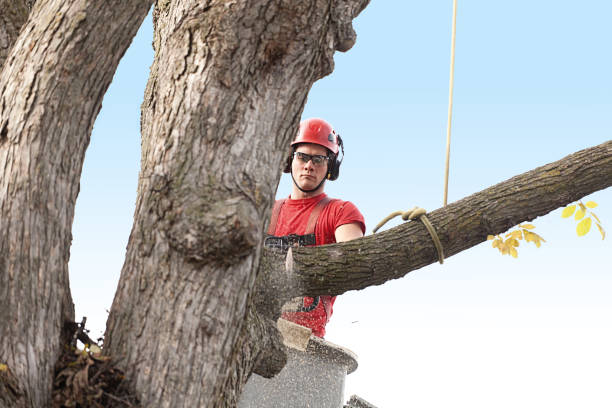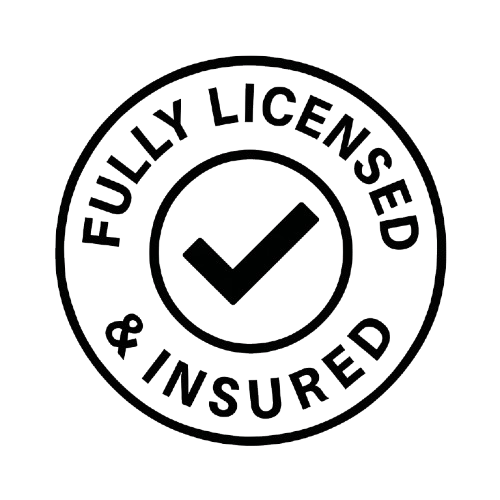The Spotted Lanternfly and the Ailanthus Tree: A NYC Property Owner’s Guide

A Silent Threat: Invasive Species in NYC Invasive Species Origin Ecological Impact Management Strategies Spotted Lanternfly (Lycorma delicatula) China, India, Vietnam Threatens various trees and plants, weakens them with feeding, promotes disease spread. * Tree removal (esp. Ailanthus altissima) * Egg mass scraping * Insecticide application (targeted) * Public awareness and monitoring programs Tree of Heaven (Ailanthus altissima) China Disrupts native plant communities, reduces biodiversity, allelopathic chemicals inhibit surrounding plant growth. * Mechanical removal (cutting/grinding) * Herbicide application (for stumps) * Controlled burns (in some areas) * Planting native species to compete Norway Maple (Acer platanoides) Europe, Western Asia Outcompetes native trees, reduces forest regeneration, dense shade reduces understory growth. * Selective removal to encourage native species * Biological controls (insects/fungus) * Herbicide application (targeted) Kudzu Vine (Pueraria montana var. lobata) Japan, China, Southeast Asia Rapidly smothers native vegetation, alters forest structure, reduces wildlife habitat. * Mechanical removal (pulling/cutting) * Herbicide application (targeted) * Prescribed grazing (in some areas) Common Reed (Phragmites australis) Eurasia, Africa Forms dense monocultures, crowds out native wetland plants, reduces biodiversity. * Controlled burns (winter) * Water level manipulation * Herbicide application (targeted) * Biological controls (insects) The Spotted Lanternfly in NYC: Threat to Trees and Plants New York City faces a double threat from invasive species – the Spotted Lanternfly and the Ailanthus tree (Tree of Heaven). The Spotted Lanternfly, a brightly colored planthopper native to Asia, first arrived in the US in 2014 and has since established itself in several states, including New York. This fast-reproducing pest poses a significant threat to a variety of trees and plants, with a particular fondness for the Ailanthus. They weakens plants, making them susceptible to disease. The Ailanthus Tree: A Not-So-Heavenly Invader The Ailanthus tree, while initially valued for its rapid growth and tolerance of harsh conditions, has become a major problem in NYC due to its aggressive nature. It outcompetes native species for resources, releases chemicals that inhibit nearby plant growth, and can quickly dominate entire landscapes. This disrupts natural ecosystems and reduces biodiversity, creating an environment where invasive species like the Spotted Lanternfly can thrive. NYC’s Spotted Lanternfly History: A Cause for Concern The first sighting of the Spotted Lanternfly in NYC occurred on Staten Island in 2020. Since then, the infestation has spread rapidly across all five boroughs, with particularly high concentrations in Manhattan and the Bronx. Despite ongoing control efforts by state and local agencies, the lanternfly’s rapid reproduction and spread make eradication a significant challenge. The Unfortunate Alliance: Why Ailanthus Trees and Spotted Lanternflies are a Perfect Match The Ailanthus tree acts as a critical host for the Spotted Lanternfly. Here’s why this combination is detrimental to NYC’s urban ecosystem: A Buffet for Lanternflies: Ailanthus trees provide a readily available food source for lanternflies, allowing their populations to explode. A Breeding Ground for Trouble: The abundance of Ailanthus trees facilitates the spread of lanternflies to other parts of the city, threatening a wider range of flora. A Weakened Ecosystem: Both the lanternfly’s feeding and the Ailanthus tree’s allelopathic effects weaken native plants, making them more susceptible to additional threats. Case Studies: NYC Tree Pro Protects Properties from Invasive Species At NYC Tree Pro, our expert arborists have witnessed firsthand the devastating impact of the Spotted Lanternfly and Ailanthus tree on NYC properties. Here are two examples of how we helped property owners combat this invasive duo: Yorkville, Manhattan: A property owner faced a severe Spotted Lanternfly infestation on their Ailanthus trees. The rapid spread threatened nearby plants. NYC Tree Pro recommended removing the Ailanthus trees, eliminating the primary food source for the lanternflies. After removal, lanternfly activity significantly decreased. Follow-up treatments ensured the infestation didn’t return. Spanish Harlem, Manhattan: A community garden’s diverse plant life was at risk due to Spotted Lanternflies on their Ailanthus trees. NYC Tree Pro’s strategic removal plan not only stopped the lanternfly infestation but also allowed native plants to flourish, improving the garden’s overall health and biodiversity. The Benefits of Removing Ailanthus Trees with a Spotted Lanternfly Infestation Removing Ailanthus trees infested with Spotted Lanternflies offers several advantages for NYC property owners: Stops Lanternfly Infestations at the Source: Eliminating the primary food source disrupts the lanternfly life cycle and helps control their population. Protects Native Plants: Removing Ailanthus trees creates space for native species to thrive, promoting a healthier and more diverse ecosystem. Enhances Property Value: A well-maintained property with healthy trees is more aesthetically pleasing and valuable. Addressing invasive species issues improves the overall landscape health. Beyond Ailanthus: Why Managing Invasive Species Matters The Spotted Lanternfly and the Ailanthus tree disrupt the delicate balance of NYC’s ecosystems. They outcompete our native plants and animals for resources, alter habitats, and decrease biodiversity. This can have cascading effects, impacting everything from the health of our urban forests to the overall ecological balance of the city. Taking Action: NYC Tree Pro, Your Partner in Invasive Species Management Expert Arborist Services: At NYC Tree Pro, we understand the complexities of invasive species management. Our team comprises certified arborists with extensive knowledge of both the Spotted Lanternfly and the Ailanthus tree. We possess the expertise to assess your property, determine the best course of action, and safely and effectively remove Ailanthus trees while minimizing disruption to your landscape. Our Ailanthus Tree Removal Process: Comprehensive Tree Inspection: Our arborists will conduct a thorough inspection of your Ailanthus trees and the surrounding area to assess the severity of the Spotted Lanternfly infestation. Customized Removal Plan: Based on the inspection, we’ll develop a personalized removal plan that prioritizes safety and efficiency. This might involve techniques like bucket trucks, cranes, or targeted herbicide application (for stump removal). However it depends on the size, location, and surrounding environment of the trees, as each job is different. Safe and Efficient Removal: Our highly trained crew utilizes state-of-the-art equipment and adheres to strict safety protocols to ensure the safe and efficient removal of Ailanthus trees. Debris Removal and Cleanup: We’ll meticulously remove all debris from the removal
Tree Removal in NYC: A Comprehensive Guide for Property Owners

Living in the vibrant, densely packed boroughs of New York City, particularly Manhattan and the Bronx, comes with unique challenges – one of them being tree management. This guide delves into the various reasons why NYC property owners might need professional tree removal services, explores the cutting-edge equipment utilized by NYC Tree Pro, and highlights the key advantages of choosing them for your arborist needs. Compelling Reasons for Tree Removal in NYC Tree removal in NYC isn’t a one-size-fits-all solution. Here are some of the most common reasons why property owners seek professional tree removal services: Safety First: In a city environment, overgrown or damaged trees pose a significant threat. Dead or diseased branches can become projectiles in strong winds, potentially causing property damage, injuries, or worse. Uprooted trees due to storms can be catastrophic. NYC Tree Pro prioritizes safety with 24/7 emergency services to address urgent situations and mitigate potential hazards before they occur. Tree Health: Sometimes, despite our best efforts, trees succumb to disease or insect infestations. These compromised trees can become breeding grounds for pests and diseases, jeopardizing the health of nearby healthy trees. Early detection and intervention are crucial. NYC Tree Pro’s certified arborists possess the expertise to diagnose tree health issues and recommend the most appropriate course of action, including removal if necessary. Aesthetics and Property Value: Well-maintained trees enhance the visual appeal of property and contribute to its overall value. However, overgrown, diseased, or poorly placed trees can detract from the aesthetics and even lower your property value. Strategic tree removal can create a more visually pleasing landscape, improve sunlight penetration, and open up valuable space for new landscaping projects. Structural Concerns: Trees planted too close to buildings can wreak havoc on your foundation over time. Their expansive root systems can grow into and damage foundations, sewer lines, and other underground infrastructure, leading to expensive repairs. Additionally, large trees with aggressive root systems can crack sidewalks and driveways. Proactive tree removal by NYC Tree Pro’s skilled professionals can save you considerable expense and hassle in the long run. NYC Tree Pro’s Cutting-Edge Equipment Arsenal At NYC Tree Pro, we understand that every tree removal project presents unique challenges. That’s why we invest heavily in the latest and most advanced equipment in the industry, ensuring we can do any job efficiently and safely, no matter the size or complexity. Here’s a glimpse into our state-of-the-art equipment: Aerial Lift Trucks: These specialized vehicles provide unrivaled access for our arborists. They can safely reach high branches and navigate tight urban spaces where traditional climbing methods might be impractical. High-Capacity Wood Chippers: We are committed to eco-friendly practices. Our powerful wood chippers transform branches and trunks into valuable mulch, which can be used for landscaping projects or redistributed for other purposes. This not only streamlines debris management but also promotes sustainability. Precision Cranes: For particularly large or precariously positioned trees, cranes become an invaluable tool. Skilled crane operators work hand-in-hand with our arborists to execute a smooth and efficient removal. Why Choose NYC Tree Pro? Here’s What Sets Us Apart We are a family-owned, third-generation business with a deep-rooted commitment to serving the NYC community. Here are just a few reasons why NYC Tree Pro should be your go-to choice for tree removal services: 24/7 Emergency Response: We understand that emergencies don’t wait for convenient business hours. That’s why we offer 24/7 emergency tree services to address urgent tree-related issues, ensuring your safety and minimizing potential damage. Unmatched Expertise: Our team comprises arborists who possess the knowledge and experience to determine the safest and most efficient removal methods, and navigate the complexities of urban tree removal. We combine traditional arborist expertise with the latest advancements in technology to deliver exceptional results. Commitment to Safety: Safety is paramount at NYC Tree Pro. Our crew members are trained and equipped with the latest safety gear, adhering to strict industry standards. We prioritize a meticulous planning process before every removal, minimizing risk and ensuring a smooth operation. Transparency and Communication: We believe in clear communication, and our arborists will conduct a thorough inspection of your property and trees, explain their recommendations in detail, and answer any questions you may have. We’ll provide you with a transparent and upfront cost estimate before any work begins. Respect for Your Property: We understand that your property is valuable to you. Our cleanup is thorough, leaving your property clean and debris-free. Environmentally-Conscious Practices: Sustainability is a core value at NYC Tree Pro. We utilize eco-friendly practices whenever possible. Our wood chippers transform wood debris into valuable mulch, which can be reused for landscaping projects. We also recycle any materials that can be salvaged. Client Satisfaction Guaranteed: Customer satisfaction is our priority. We strive to exceed your expectations with exceptional service, clear communication, and a commitment to safety and efficiency. We are proud of our track record of satisfied customers, as shown by the positive testimonials on our website and Google Map listing. Client Testimonials: Proven Excellence Here are a few examples from our Google reviews: Mark K: “Great job! Was in a jam after a storm. Got an estimate the next day and the job was completed the following morning. The tree was in a tough spot behind the building. Excellent execution by the crew. Would recommend!” Jerry S: “Thank you for removing my tree behind my business. Good prices and great people. I would highly recommend this company.” These testimonials highlight our prompt response, professional execution, and customer-centric approach. Ready to Address Your Tree Removal Needs? NYC Tree Pro is your trusted partner for all your tree removal needs in Manhattan and the Bronx. Whether you’re facing a safety hazard with a diseased tree, need to improve the aesthetics of your property, or require emergency storm cleanup, our team of certified arborists and highly trained crew members are here to help. Contact NYC Tree Pro today for a free consultation and quote. We’ll assess your situation, discuss your options, and provide you with
How Do I Know If a Tree Needs to Be Removed?

Trees add so much to our lives, from the beauty of leafy streets to the shade on a hot summer day. But sometimes, those same trees can become a problem. Knowing when to remove a tree can prevent damage and keep your property safe. If you’re in Manhattan, especially the Upper East Side or Upper West Side, this guide will help you understand when it’s time to call in the pros. NYC Tree Pro has the expertise to handle all your tree care needs. How Do You Know If a Tree Is Going to Uproot? When a tree in your yard or near your building looks like it might uproot, it’s time to take action. Here are some signs to watch for: Leaning Trunk: If a tree that used to stand tall is now leaning, especially after a storm, it’s a sign that the roots might be compromised. In Manhattan, where space is tight, a leaning tree can quickly become a hazard. Root Damage: Have you noticed construction around your property? Excavation work can harm roots, making a tree unstable. NYC Tree Pro can assess the damage and determine if the tree needs to come down. Soil Heaving: Look around the base of the tree. If you see the soil lifting or cracking, it means the roots are pulling out of the ground. This is especially common after heavy rains or floods. What Are the Signs That a Tree Might Fall? A tree that’s at risk of falling can be a serious danger. Here’s what to look for: Cracks in the Trunk: Deep splits or cracks can mean the tree is structurally unsound. If you’re walking around Manhattan and notice a tree with a large crack, it’s best to report it. Dead or Falling Branches: While it’s normal for trees to shed a few leaves and branches, too many dead branches are a red flag. Imagine walking down Broadway on the Upper West Side and seeing a tree shedding large branches—that’s a situation that needs attention. Fungus Growth: Mushrooms growing at the base of a tree usually indicate internal rot. This compromises the tree’s stability. NYC Tree Pro can inspect and remove diseased trees safely. Which Way Will a Tree Fall in a Storm? Predicting where a tree will fall during a storm can be tricky, but here are some clues: Leaning Direction: A tree that leans towards your house is more likely to fall in that direction. Weight Distribution: If one side of the tree has more branches and leaves, it’s more likely to fall that way. In Manhattan, where buildings are close together, this can be especially dangerous. Wind Direction: During storms, trees usually fall in the direction of the wind. Strong winds can uproot even healthy trees. How Do You Tell If a Tree Will Hit Your House? Worried about a tree hitting your house? Here’s how to assess the risk: Proximity: Measure the distance between the tree and your house. If the tree is taller than this distance, it’s a potential risk. In Manhattan, where buildings are often close to the street, this is a common concern. Branch Overhang: Large branches overhanging your house can cause damage if they break off. Picture a large tree branch crashing through your window—it’s not something you want to deal with. Tree Health: Regular inspections by NYC Tree Pro can help determine if your trees are at risk. Real-Life Examples and Solutions Upper East Side Brownstone A resident on East 79th Street noticed their tree leaning significantly after a heavy storm. Concerned about the safety of their home and neighbors, they called NYC Tree Pro. Our team quickly assessed the root damage and safely removed the tree before it could cause any harm. Upper West Side Brownstone On West 86th Street, a homeowner had a tree in front of their brownstone that was damaged and leaning dangerously. Passers-by were concerned it might fall on an unsuspecting walker. The homeowner called NYC Tree Pro. We responded promptly, evaluated the tree’s condition, and removed it safely, ensuring the safety of both the property and the public. Midtown Commercial Building A large tree fell on a walkway in front of a commercial building on Madison Avenue during a storm. NYC Tree Pro’s emergency team arrived swiftly to clear the tree and debris, restoring access and safety to the area. This prompt response prevented further disruption for the businesses in the building. Why Hiring NYC Tree Pro Is a Good Idea Living in Manhattan means you need a tree service that understands urban environments. Here’s why NYC Tree Pro is your best choice: Expert Arborists: Our team consists of certified arborists who know the unique challenges of tree care in Manhattan. From the Upper East Side to the Upper West Side, we’ve got you covered. Emergency Services: Trees can pose immediate hazards, especially after storms. Our teams are available 24/7 in an emergency. Call us if you need tree service before, during, or after a storm. Storm Cleanup: NYC Tree Pro is equipped to handle extensive storm damage. From removing fallen trees to clearing debris, we restore your property quickly and safely. Safety First: Our professionals use state-of-the-art equipment and follow strict safety protocols to ensure every job is done right. Conclusion Don’t wait until it’s too late. If you notice any of these warning signs, contact NYC Tree Pro today. Our expert team is ready to assess your trees and provide the necessary services to keep your property safe. Whether you’re in the Upper East Side, Upper West Side, or anywhere in Manhattan, we’re here to help. Call us now for a free consultation and let’s keep your trees healthy and your property safe.




